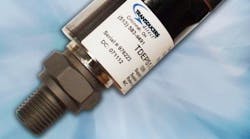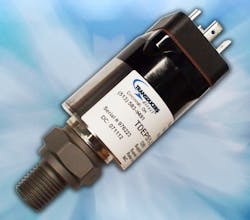The TDEPS electronic pressure switch with relay output uses redundant half-bridge circuitry for high-shock/high-vibration environments. Features include ±0.25% BFSL total error band (includes nonlinearity, hysteresis, and nonrepeatability); 9- to 28-Vdc power supply; 250 Vac or dc relay output (5-A maximum); compensated and operating temperature range of –40 to 194°F; and redundant sensing elements, if one fails, the switch continues to operate on the remaining elements.
Transducers Direct, (513) 583-9491, www.transducersdirect.com


